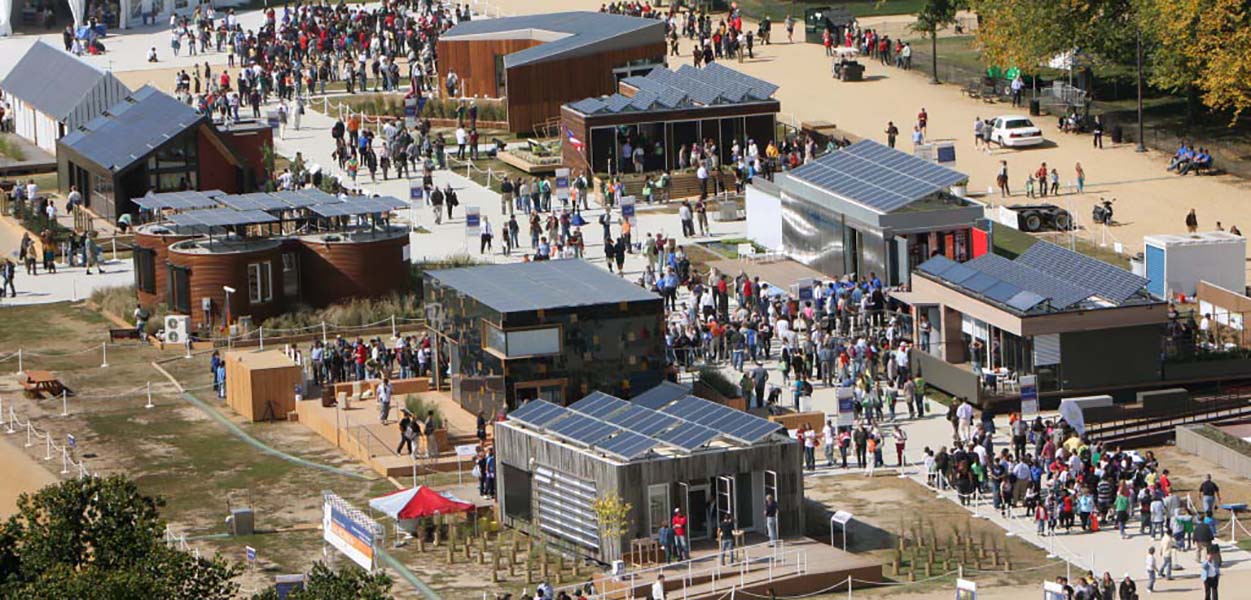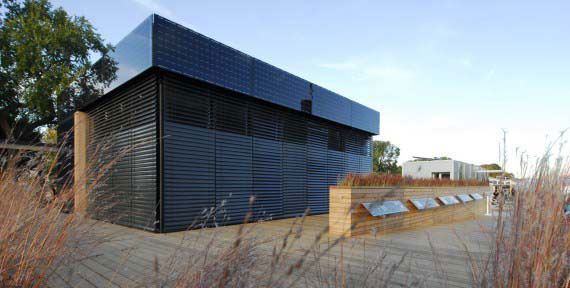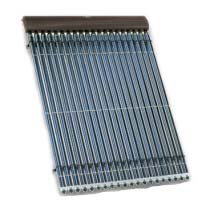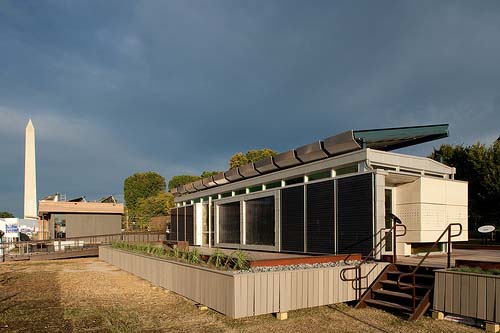“…..someday we will harness the rise and fall of the tides and imprison the rays of the sun”
– Thomas A. Edison (1847-1931)
This past fall we visited the 2009 Solar Decathlon Competition in Washington DC to see first hand how 20 design teams from around the world have tackled the challenges of Net Zero Energy Architecture. We are excited to report that Net Zero Energy design has arrived!

To compete, teams had to design and build energy-efficient houses powered solely by the sun, with comfortable, healthy indoor environments, operating at net zero energy or better (a surplus). While there were many common approaches to achieving net zero energy outcomes, it was interesting to see the range of strategies employed for adapting to different home regions, from subtropical Puerto Rico to high-latitude northern Canada. To compete, teams had to design and build energy-efficient houses powered solely by the sun, with comfortable, healthy indoor environments, operating at net zero energy or better (a surplus). While there were many common approaches to achieving net zero energy outcomes, it was interesting to see the range of strategies employed for adapting to different home regions, from subtropical Puerto Rico to high-latitude northern Canada.


Getting to Net Zero
To get to net zero energy solutions, the teams employed three tiered strategies. First, they began by drastically reducing demand loads for heating, cooling, lighting, hot water and home appliances. Second, entrants devised a variety of passive design strategies to optimize solar heat gain, sun shading, daylighting, natural ventilation, and thermal energy storage. Finally, active energy systems were integrated to meet the necessary supplemental energy requirements of each structure. Solutions assembled different combinations of photovoltaic panels, solar hot water collectors with evacuated glass tubes, heat pumps, and energy recovery ventilation.

Active solutions for external shading devices, PV panel solar tracking, triple insulating glass along with a high degree of automated sensing and control systems were also common. One team even had the ability to monitor and run their home’s systems over the internet from a custom iphone application.
Many of the 2009 Solar Decathlon entries will produce a net positve energy return annually. This competition vividly demonstrates that net zero energy buildings and energy independence from fossil fuels are realistic, achievable outcomes. Edison’s prediction nearly 100 years ago is now a reality.
For more information on this event visit www.solardecathlon.gov.